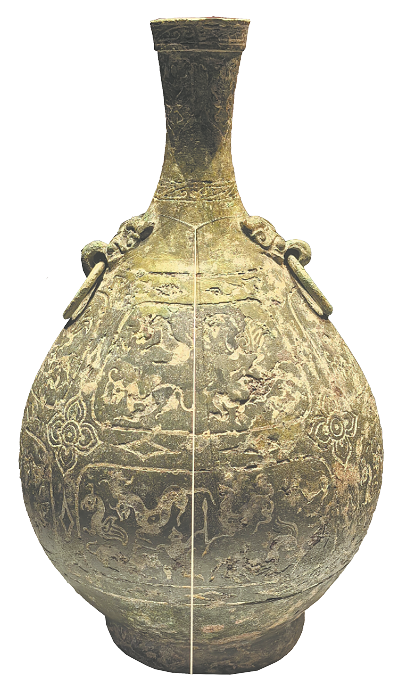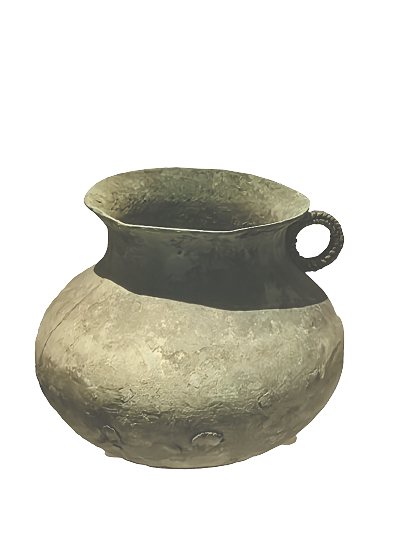

Though not easy to access, the Luojiaba Site Museum in Xuanhan, a county under the administration of Dazhou in the easternmost part of Sichuan province, ushers in visitors from different parts of the country during the Spring Festival holiday.
Luojiaba is located in the mountainous Puguang town in Xuanhan whose natural scenery is breathtaking. In March 1996, the then State Administration of Cultural Heritage approved the excavation of ancient tombs there.
From 1999 to 2023, the Sichuan Provincial Institute of Cultural Relics and Archaeology carried out eight excavations, cleaned up more than 250 tombs belonging to the Eastern Zhou Dynasty (770-256 BC) and unearthed more than 3,000 cultural relics.
In 2001, the archaeological excavation site known as the Luojiaba Ruins was included in China's fifth batch of key cultural relics protection units.
The site has a total protection area of about 1.2 million square meters. Of this, the core area is about 700,000 sq m.
"It is one of the country's largest and best-preserved Ba sites with the richest cultural connotation," Wang Yi, archaeologist and former head of the Sichuan Provincial Cultural Heritage Administration, says.
As the country's first special museum of Ba culture, the Luojiaba Site Museum has an exhibition area of about 3,000 sq m, displaying the results of the eight archaeological excavations in the Luojiaba Ruins.
The museum exhibits more than 500 exquisite cultural relics including bronze, jade, pottery and stone tools.

A bronze kettle with hunting patterns and a bronze seal with 11 symbols, such as a star, moon and mountains, are some of the most precious exhibits.
"The Luojiaba Ruins has witnessed the excavation of more than 20 bronze seals with more than 200 symbols," says Chen Weidong, a researcher with the Sichuan Provincial Institute of Cultural Relics and Archaeology.
Bronze weaponry, such as arrowheads, spears and dagger-axes with tiger patterns, are very impressive, justifying records that Ba soldiers were very brave, Chen adds.
When King Wu of the Zhou Dynasty (c. 11th century-256 BC) fought a decisive battle to defeat Di Xin, the last king of the Shang Dynasty (c.16th century-11th century BC), Ba soldiers were with the former, according to Huayang Guozhi (The History of Huayang), a local chronicle completed in 354 AD that records the history, geography and people of Southwest China.
In remote antiquity, tribes of an ethnic group called Ba lived around the Daba Mountains and Wushan Mountains in today's eastern Sichuan, Chongqing municipality and western Hubei province.
They gradually left the mountains, fanning out in different areas and forming branches of the Ba people. The Ba civilization dates back thousands of years when Baihu, a branch of the Ba people, founded the Ba state and had its capital in Jiangzhou, which is today's Chongqing. In 316 BC, after the state of Qin conquered the Ba state, the community's culture began to ebb.
For Ma Yueyuan, a visitor from Chengdu, Sichuan, the museum provides good insight into the past.